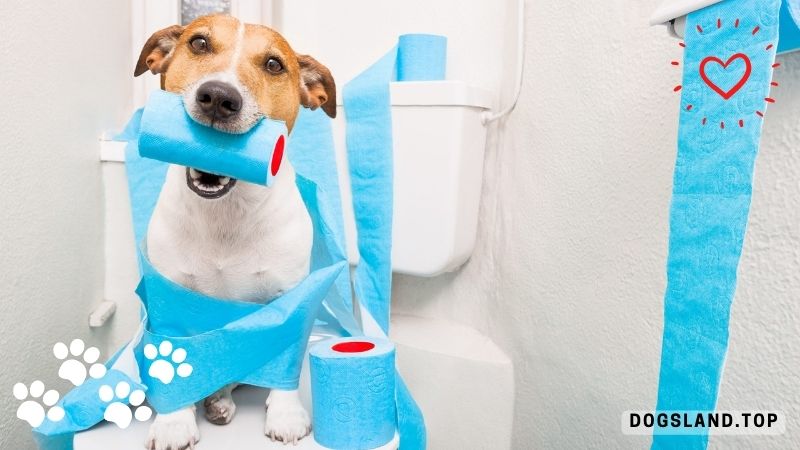How to Potty Training a Puppy – Tips For New Dog Owners

If your puppy has already started learning the basics at the breeder, you may find potty training your puppy to be a breeze. If this isn’t the case, though, don’t give up hope; turn over a new leaf.
Keep in mind that your puppy will need to use the bathroom, and that until you teach him or her otherwise, any place will seem like a perfectly fine bathroom!
When potty training a puppy, it helps to keep him or her confined to a small area at first. There should be a bed for the puppy here (or a crate, if you’re crate training), as well as a “toiletings area” and the dog’s water and food plates.
A puppy’s basic instinct is to eliminate in a location separate from his napping and feeding quarters, so make sure that his toileting area is located some distance from these areas.
You should use turf or shingle in a litter box, or whatever surface you prefer for your puppy to use outside when nature calls.
If your puppy has been using puppy pads, you can help him or her make the connection between the pad and the outside world by placing grass or soil on it.
You should also designate a spot in your garden as the dog’s bathroom; this spot should be as peaceful and undisturbed as possible.
While you’re at home during the day, you should:
- Within 20 minutes of your puppy’s last meal, drink, or awakening, you should take him for a trip to the outdoor toilet area.
- Within 5 minutes of vigorous play, take your puppy to the outside toilet area.
- Every 1-2 hours for puppies under 12 weeks, every 3-4 hours for puppies 12-16 weeks, and every 4-5 hours for puppies older than 16 weeks, you should take your puppy out to the outdoor toilet area.
Do not just allow your puppy go out into the backyard without a leash, as you may not be able to tell if he has gone or not.
To encourage your puppy’s bladder and intestines, walk to the bathroom. Be motionless and patient while your dog uses the bathroom. If nothing happens after three minutes, go back inside and try again in twenty to thirty minutes.
Encourage your puppy to continue doing so by making a big deal out of him when he go outside, rewarding him with a treat and maybe even playing a game with him in the fresh air for a little period.
Your puppy wants to toileting outside as soon as possible because he knows he will be rewarded for doing so. If you take your puppy outside just to bring him back inside, he may develop the bad habit of putting off toileting as long as possible so he can spend more time exploring his new environment.
Aside from these times, if you see your puppy circling with his nose to the ground, you should take him outdoors immediately to the designated bathroom place.
You’ll learn to recognize the warning indications that your puppy has to use the bathroom, and when you do, you may take him or her out immediately.
If you catch your puppy pooping somewhere other than his designated toileting area, you should quickly and quietly pick him up and take him to the designated toileting area, and praise him if he defecates there as well. If it doesn’t, you should wait three minutes and try again. Read also: How To Do Obedience Training For Your Dog
Even with the most careful supervision, accidents can occur when toilet training. Relax, figure out how to better time it next time, and if you can’t, just call it a fluke and go on.
Stop Punishing for Using the Wrong Restroom:
Your dog will just understand that people are dangerous when he toilets indoors, not that he shouldn’t do his toilet inside the house. Don’t forget to cleanse the area where the accident occurred to get rid of any lingering odors that might tempt your dog to urinate there again.
When you are unable to take your puppy outdoors during the times specified above, when you will be away from home for an extended period, or when you plan to sleep, the indoor toilet area is an excellent alternative.
Keeping your puppy confined to a tiny space reduces the dog’s safety zone. Place the toilet at the far end of the confinement area, away from the bed and feeding bowls; however, make sure this area is not too large, otherwise the puppy may find other places to defecate.
Positively Reinforcing Your Dog after Outdoor Toileting: How to give your dog a treat when he does potty outside:
Your dog will learn that going to the bathroom outside is a pleasant experience if you reward him with a treat and some quality playtime in the yard after he uses the facilities.
From the time they are 20 weeks old, most puppies can go 5-6 hours without having to go to the bathroom. Your dog can keep his urine for up to four or five hours, but that doesn’t mean you shouldn’t take him out more often than that on a regular basis.
Conclusion
Puppies pick up on what is and is not harmful, as well as what gives them what they want the quickest, very rapidly. Ask yourself, “What am I teaching?” before rewarding them with a treat, snuggle, food, or play.
As opposed to ignoring your puppy’s barking, have you been playing with him? Your pup will soon learn to bark at people whenever they come near.
Do you insist your dog sit quietly and stare at you before you feed him? In this way, you may educate your puppy that sitting quietly and not leaping up at you, howling, or running about is the way to get meals.
Always look for the bright side of things and ignore the negative 🙂